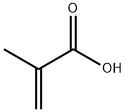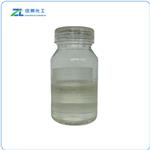Description
Sensitization to 1,4-butanediol dimethacrylate (BUDMA)
was reported in dental technieians, with cross
reactivity to methylmethacrylate.
Chemical Properties
1,4-Butanediol dimethacrylate has a clear liquid appearance and is used as a cross-linking methacrylic monomer of polymers. They are present in dental composite materials, sealants, and inks. 1,4-Butanediol dimethacrylate is a non flammable liquid, with a low volatility and a moderatesolubility in water.
Uses
cross-linking methacrylic monomer for use in dental-composite materials, sealants, prostheses, etc.
Application
1,4-Butanediol dimethacrylate is an important crosslinking agent, which can be used as a crosslinking agent for rubber and plastics, a modifier for rubber and synthetic resins, an adhesive for acrylic sheets, and a plasticizer for glass fibers. It is widely used in injection moldings, rubber, optical plastics, adhesives, dental materials, wire and cable coatings, etc. At present, the preparation of 1,4-butanediol dimethacrylate is usually carried out by a reactive distillation ester exchange process in the presence of a catalyst and an inhibitor. The purpose of adding a catalyst and an inhibitor is to accelerate the reaction process and prevent polymerization during the reaction and distillation under the action of light and heat.
Synthesis
Methyl methacrylate and 1,4-butanediol are taken as raw materials. The following steps conclude: reacting the methyl methacrylate with the 1,4-butanediol to prepare the product of 1,4-butanediol dimethacrylate with the purity of over 99.0 percent by adopting a reaction distillation ester exchange process in the presence of a catalyst and a polymerization inhibitor, wherein the catalyst is an organic tin catalyst. The polymerization inhibitor is a composite polymerization inhibitor.






